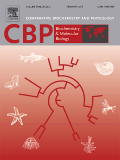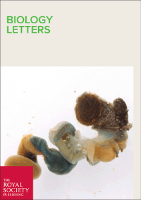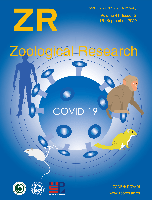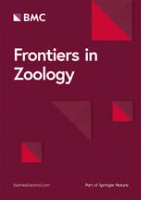
Journal of Experimental Zoology Part A-Ecological and Integrative Physiology
Scope & Guideline
Exploring the synergy between ecology and physiology.
Introduction
Aims and Scopes
- Ecological Physiology:
Research that explores how physiological processes influence ecological interactions and adaptations in various animal species. - Behavioral Ecology:
Investigations into how animal behavior is shaped by ecological factors, including habitat, resource availability, and interspecies interactions. - Thermal Physiology:
Studies examining how temperature affects physiological processes, particularly in ectotherms, and how these processes influence behavior and survival. - Endocrinology and Reproductive Biology:
Research focused on the hormonal regulation of physiological processes and reproductive strategies, including studies on stress responses and reproductive adaptations. - Physiological Responses to Environmental Stressors:
Investigations into how organisms respond physiologically to environmental changes such as pollution, climate change, and habitat modification. - Comparative Physiology:
Comparative studies that examine physiological traits across different species, providing insights into evolutionary adaptations and ecological strategies.
Trending and Emerging
- Impact of Climate Change on Physiology and Behavior:
There is an increasing emphasis on understanding how climate change affects physiological processes and animal behavior, reflecting global environmental concerns. - Microbiome and Host Interactions:
Research exploring the role of gut microbiota on host physiology and behavior is gaining traction, highlighting the importance of symbiotic relationships in ecological contexts. - Stress Physiology and Health:
A growing body of work focuses on stress responses in animals, examining how environmental and anthropogenic stressors affect health, reproduction, and survival. - Integrative Approaches to Animal Studies:
An emerging trend towards integrative methodologies that combine ecological, physiological, and behavioral perspectives to understand complex biological systems. - Physiological Adaptations to Urbanization:
Research investigating how urban environments influence physiological processes and adaptations in wildlife is increasingly prominent, addressing the impacts of habitat modification.
Declining or Waning
- Conventional Toxicology Studies:
Research primarily focused on the toxicological effects of environmental contaminants on model organisms has decreased, possibly due to a shift towards more integrative approaches that consider ecological and physiological contexts. - Habitat-Specific Adaptation Studies:
While still relevant, the emphasis on studies that focus solely on adaptations to specific habitats has diminished in favor of broader ecological and physiological integrative studies. - Traditional Morphological Studies:
The focus on purely descriptive morphological research has waned, with a growing preference for studies that link morphology to functional and ecological outcomes.
Similar Journals

COMPARATIVE BIOCHEMISTRY AND PHYSIOLOGY B-BIOCHEMISTRY & MOLECULAR BIOLOGY
Advancing Knowledge in Comparative BiochemistryComparative Biochemistry and Physiology B: Biochemistry & Molecular Biology, published by Elsevier Science Inc, is a premier journal dedicated to the field of biochemistry and molecular biology with a specific focus on comparative analyses across various biological systems. Since its inception in 1971, the journal has made significant contributions to our understanding of the biochemical and physiological processes that differentiate organismal function across animal and aquatic life. The journal holds a commendable position in the academic community, evidenced by its 2023 rankings, which place it in the second quartile for Animal Science and Zoology and Aquatic Science, and the third quartile for both Biochemistry and Molecular Biology as well as Physiology. Researchers and students can access cutting-edge research through this highly respected publication, which continues to influence the future of biological sciences. While currently not an Open Access journal, its rigorous peer-review process ensures that only high-quality articles are disseminated, further solidifying its role as a critical resource for professionals and academics alike seeking to explore the intricate relationships between biochemical structures and physiological functions.

Journal of Comparative Physiology B-Biochemical Systems and Environmental Physiology
Exploring the Interactions of Life and EnvironmentJournal of Comparative Physiology B-Biochemical Systems and Environmental Physiology, published by SPRINGER HEIDELBERG in Germany, stands at the forefront of research in the fields of physiology, biochemistry, and ecological systems. With a commitment to fostering interdisciplinary communication, this journal has been a vital resource since its inception in 1974, converging scientific exploration through the lens of biochemical mechanisms and environmental adaptations in animal systems. Renowned for its rigorous peer-review process, it has achieved impressive rankings, including Q2 in Animal Science and Zoology and Ecology, Evolution, Behavior and Systematics, reflecting its substantial impact within these disciplines. The journal aims to disseminate cutting-edge research that advances our understanding of physiological and biochemical processes while addressing contemporary environmental challenges. While currently operating on a traditional access model, the journal's contributions are crucial for researchers, professionals, and students seeking profound insights into the complex interactions between organisms and their environments.

American Journal of Physiology-Regulatory, Integrative and Comparative Physiology
Elevating the Standard of Physiological ScholarshipThe American Journal of Physiology-Regulatory, Integrative and Comparative Physiology, published by the American Physiological Society, serves as a premier platform for disseminating cutting-edge research in the fields of physiology, emphasizing regulatory, integrative, and comparative studies that advance our understanding of bodily functions. With an ISSN of 0363-6119 and E-ISSN of 1522-1490, this esteemed journal is recognized for its substantial impact, maintaining a 2023 Q2 ranking in both the physiology and medical physiology categories as well as commendable positions in Scopus rankings. The journal has been pivotal since its inception in 1977 and continues to foster interdisciplinary dialogue among researchers, professionals, and students alike, contributing significantly to the evolving landscape of physiological sciences. Although it operates under a traditional subscription model, its commitment to high-quality, peer-reviewed content ensures that it remains an essential resource for anyone engaged in physiological research and education.

BMC Zoology
Unlocking the mysteries of the animal kingdom.BMC Zoology, published by BMC, is a distinguished open-access journal that has been advancing the field of zoological research since its inception in 2016. With an impressive Q2 ranking in both Animal Science and Zoology categories as of 2023, the journal occupies a significant position in the academic landscape, engaging a global readership dedicated to the exploration of animal biology. Based in the United Kingdom, BMC Zoology prides itself on providing a platform for innovative research, fostering collaboration among scientists, and facilitating access to high-quality scholarly articles. Researchers and practitioners in zoology can benefit from its extensive repository of articles that span various areas including conservation, ecology, and evolutionary biology. As an essential resource for scholars and students alike, BMC Zoology commits to enhancing the dissemination of knowledge in the zoological sciences through its open-access model, ensuring widespread access to cutting-edge research findings.

ZOOLOGICHESKY ZHURNAL
Advancing the frontiers of zoological knowledge since 1950.Zoologichesky Zhurnal, a prominent journal in the field of Ecology, Evolution, Behavior and Systematics, has been a vital publication since its inception in 1950. Published by MAIK Nauka-Interperiodica in the Russian Federation, this journal has established a notable reputation in disseminating scientific research and advancing knowledge in zoology. With its coverage spanning from 1950 to 2023, and a specific convergent focus during 1982-1983, this journal contributes significantly to the ecological and evolutionary sciences, even though it currently holds a Q4 classification in the 2023 category quartiles, indicating its niche positioning among peers. Researchers and students engaged in the study of biological sciences, particularly those interested in the dynamics of ecosystems, behavior of species, and evolutionary processes, will find valuable insights and original research articles within its pages. While access to this esteemed journal is not open, it remains an essential resource for those seeking to deepen their understanding of zoological sciences.

Integrative Organismal Biology
Illuminating the Intricacies of Organismal InteractionsIntegrative Organismal Biology, published by Oxford University Press, is a premier open-access journal dedicated to exploring the intricate relationships and interactions among organisms across various biological disciplines. Since its inception in 2019, the journal has quickly established itself in the academic community, achieving prestigious Q1 rankings in 2023 across key categories including Animal Science and Zoology, Ecology, Evolution, Behavior and Systematics, and Plant Science. With an HIndex that reflects its impactful articles, Integrative Organismal Biology serves as a vital platform for researchers, professionals, and students to disseminate groundbreaking findings and advance the understanding of organismal biology. The journal fosters interdisciplinary collaboration and adheres to rigorous peer-review standards, ensuring high-quality content that is freely accessible to a global audience, thereby enhancing the visibility and impact of research in the thriving field of organismal biology.

Biology Letters
Advancing biological knowledge through concise communication.Biology Letters, published by the esteemed Royal Society, stands at the forefront of research in the field of biological sciences, with a strong emphasis on innovative studies that bridge gaps across disciplines. Since its inception in 2005, the journal has garnered significant recognition, achieving a remarkable Q1 ranking in Agricultural and Biological Sciences (miscellaneous) and a percentile of 88th in the same category, according to Scopus rankings. Released in the United Kingdom, the journal offers a platform for authors to share concise research findings and theoretical perspectives that contribute meaningfully to the advancement of biological inquiry. Although not open access, the journal remains highly regarded in the academic community for its rigorous peer-review process and impactful content, making it an invaluable resource for researchers, professionals, and students dedicated to exploring the complexities of biology. With an ongoing commitment to excellence, Biology Letters continues to shape the future of biological sciences.

ZOOLOGICAL RESEARCH
Connecting Global Minds in Animal ResearchZoological Research, published by Science Press, stands as a premier open-access journal in the fields of animal science, zoology, and ecology. Since its inception in 1980, it has fostered an inclusive platform for innovative research and dialogue within the scientific community, enabling researchers from across the globe to share their findings and insights. The journal's significant impact is underscored by its classification in the Q1 quartile across multiple categories, including Animal Science and Zoology, Ecology, and Nature Conservation for 2023, as well as its impressive rankings within Scopus, placing it in the top tier of its respective fields. Situated in Beijing, China, Zoological Research not only contributes to advancing knowledge but also emphasizes the critical importance of conservation practices in today’s rapidly changing ecosystems. With its commitment to open access, researchers, educators, and students alike benefit from immediate, unrestricted access to vital scientific information, making it an essential resource for anyone involved in the biological sciences.

Frontiers in Physiology
Elevating the standards of physiological scholarship.Frontiers in Physiology, published by FRONTIERS MEDIA SA, is a leading open-access journal that has been at the forefront of physiological research since its inception in 2010. As a reputable publication based in Switzerland, it aims to foster the dissemination of groundbreaking findings across various domains of physiology, engaging a global audience of scholars and practitioners. With a commendable Q2 ranking in the fields of both general physiology and medical physiology for 2023, this journal stands out in its field, achieving a significant Scopus rank of #32/113 in medical physiology and #58/193 in biochemistry, genetics, and molecular biology. Frontiers in Physiology not only commits to maintaining high scholarly standards but also ensures that all its articles are freely accessible, thereby promoting collaborative knowledge exchange. With a clear focus on advancing our understanding of physiological processes, the journal plays a crucial role in the development of innovative approaches to health and disease, making it an essential resource for researchers, professionals, and students alike.

Frontiers in Zoology
Connecting researchers for a deeper understanding of ecosystems.Frontiers in Zoology is a premier, open-access journal published by BMC that has been a cornerstone of zoological research since its inception in 2004. With a commitment to advancing the field, this journal covers a broad spectrum of topics within Animal Science and Zoology, as well as Ecology, Evolution, Behavior, and Systematics. Recognized for its quality, it holds a distinguished Q1 ranking in both of these categories and ranks within the top percentiles in Scopus, with 87th and 78th percentiles, respectively. Based in the United Kingdom, it provides researchers, professionals, and students with innovative studies and findings that encourage interdisciplinary collaboration and exploration. The journal is dedicated to facilitating the open exchange of scientific knowledge, making it an essential resource for those seeking to stay at the forefront of zoological and ecological sciences.